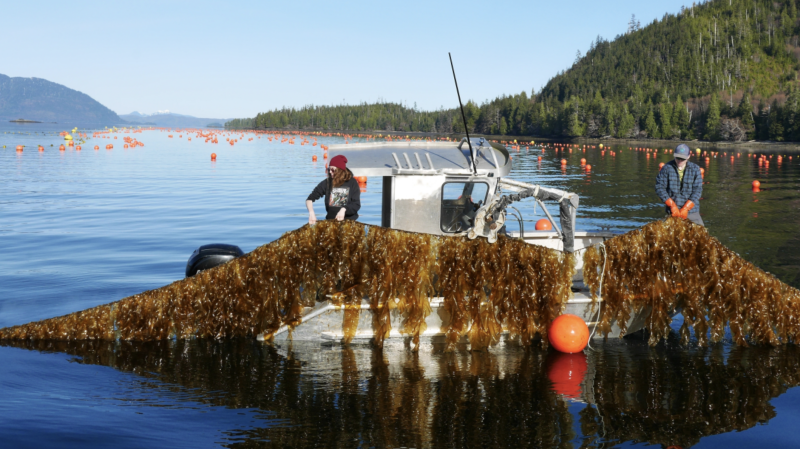As I looked around the room, I had a feeling this conference would prove interesting. The Seagriculture USA 2023 conference, held Sept. 6-7 in Portland, Maine, had just as many women as men in attendance.
I was looking forward to hearing what the younger generation had to say about seaweed farming. Did it make sense to add it to their family business on the water? Here’s what four of them had to say.
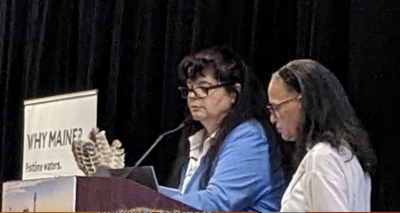
David Bailey, a research associate at the Woods Hole Oceanographic Institute, opened the session by simply stating how seaweed farming is not easy. You can’t just throw seeds in the water and expect it to grow. The ocean is chaotic and everyone needs to deal with it. He’s currently working with industry collaborators teaching them how to maintain up to five kelp cultures.
“There are things we do on the farm that are going to influence the yields,” says Bailey. “There’s also farm design and keeping the farm at the right height.”
Growth models need to get better in order to determine if nutrients are the cause of poor growth. Once developed, these growth models can compare the same process across different farms. Then, seaweed farmers have a better idea of what is affecting the growth.
Is it all nutrients, sunlight, or the seeding technique for the line spacing? Site selection is also an important part of this work.
“I’m out in the battlefields of grocery stores and consumer markets,” says Courtney Boyd Myers, founder and CEO of Akua, a pioneering company in the production and marketing of kelp products. “Just trying to figure out how to sell my seaweed products.”
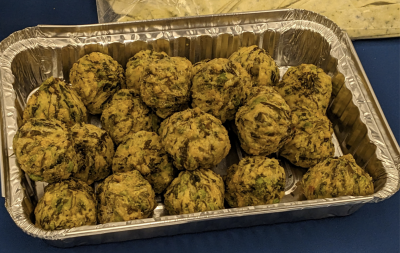
She talked about her journey and mission to convince the world to eat kelp. More importantly, Myers gives growers five key steps to follow:
- Develop an “unhealthy obsession with a healthy speech.” Growers can even refer to themselves as “a health farmer.”
- Start experimenting.
- Don’t be afraid to fail.
- Make a product that fits the market – “fit or quit.” This is the key ingredient to building any type of business, having a product that works in the market.
- Community building. Create a community that supports everything you do. You are not just farmers, what you’re doing is much more important than that. It’s new, innovative, and inspires people.
Seaweed is a traditional food staple outside the United States. Yet, in the last 10 years the interest in health and plant-based foods has risen by approximately $200 million in the marketplace.
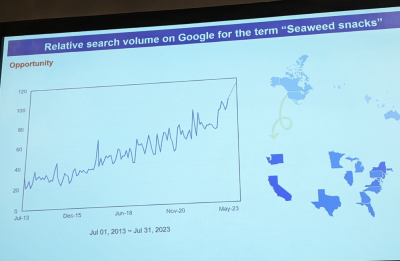
“This is limited mainly by the fact that this is currently an industry that is based almost entirely on harvesting water sources,” says Pierre Edouard Liboureau, a PhD fellow at the University of Stavanger, Norway. “As a result, there is a strong seasonality with supply and inconsistencies in the quality of the material.”
Today, seaweed farming relies on the efficiency, propagation or harvest of the reproductive materials used. There is also a strong variability in the nutritional value between 6 percent and 35 percent. The lack of knowledge of what drives this nutritional quality is an issue for most seaweed farming.
Max Burtis, who attended the Seagriculture 2023 event in Portland, said he is currently going through the process of adding seaweed farming to his business. He is the co-founder of Ferda Farms, an oyster farm in Brunswick, Maine, with his father.
“Take advantage of the services offered in your state,” says Burtis. “This includes for business plans, research, loans, etc.”
Here’s the steps Burtis recommends to get started:
Research and find the site.
Design the gear you’re going to use; you will need engineers to do this.
Apply for the state waters lease which can take at least two years to get.
Once you have the lease, then you can figure out where to get your seeds and where to sell the kelp, says Burtis.
The strains of seeds will be different by the time a new grower is ready to plant, because there’s a lot of research and development happening right now, says Burtis. High-yield strains and localized selective breeding needs to be heat resistant and heat tolerant for the warming ocean. Burtis is hoping for the spring of 2025 to have his first batch of kelp to sell.
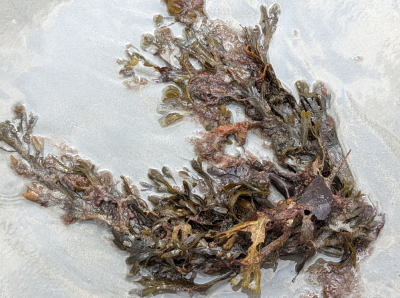
There's still a lot of questions to ask about seaweed farming. Everyone is hoping for some clarity as they begin their journey.
Seaweed farming opens more opportunities to families to add income. Women are finding it easier to get involved than lobstering or fishing, such as for research and product creation.




